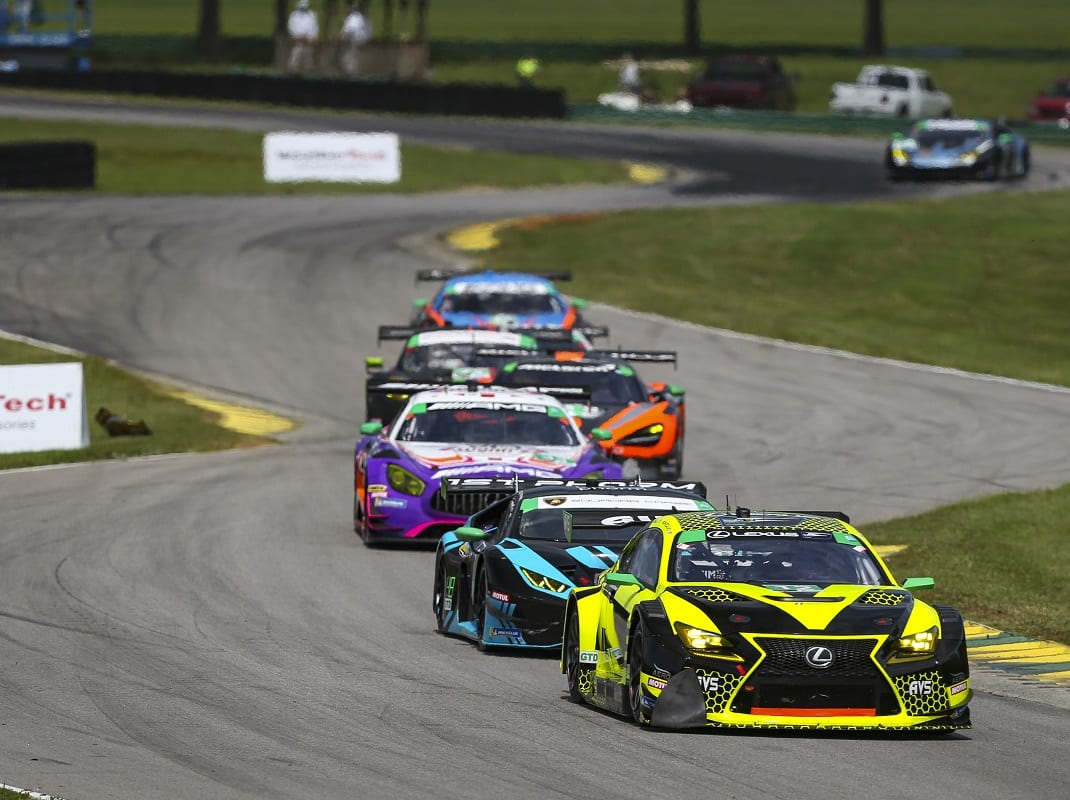If bling is your thing, then IMSA’s GT Daytona division is for you.
It’s one of two Pro-Am classes, alongside LMP2, competing in the IMSA WeatherTech SportsCar Championship. It is also the most popular of the two.
No doubt the popularity comes from big-time international factory support. Teams have a blend of top-tier professionals, up-and-coming younger drivers and a smattering of experienced amateurs. That’s likely because of major manufacturer support and increased competition on the track.
The FIA classifies drivers worldwide. Rankings are assigned precious metal monikers. Drivers are ranked into four categories — Platinum, Gold, Silver and Bronze, with Platinum and Gold reserved for the most successful pros.
Many-time IMSA champion Scott Pruett’s last drives were in GTD.
“It’s like any rule. They (the sanctioning bodies) put it in place for the right reasons,” Pruett said. “So it was established because they had gentlemen (non-professional) drivers and guys would bring money whether they were young, middle-aged or older, or you’re trying to establish yourself as a young driver. You many have good ability or not. The premise is good but the reality of it is every manufacturer wants to take advantage of it as they see fit.
“What I mean by that is there are a number of drivers that are flying under the radar but have a lot of talent, so they fit in it by rule but by ability they are beyond taking advantage of it (over qualified for their classification).”
Perish the thought that any team would think of a “start-and-park” strategy for their amateur drivers. As a result, IMSA officials have established guidelines that specify the amount of seat time drivers can have based on the length of an event.
“A few years ago that was not uncommon,” Pruett said. “Here you’ve got these guys bringing a ton of money. This was maybe 10 years ago, and they would run a few laps and get pulled out. Now, there are minimum drive times, so they (the sanctioning bodies) closed that loophole.”
Pruett says that hasn’t completely eliminated the problem.
“Now that sports cars are doing incredibly well, with a lot of manufacturer support, there are a lot of great things going on,” Pruett noted. “I think they can be more deliberate, making sure that guys at the upper end aren’t taking advantage of being a Silver driver that really should be a Gold driver and on the flip side there are Bronze drivers who shouldn’t have a license anyway.”
In another interview several years ago, Pruett suggested there should be another classification — Lead.
GTD driver Townsend Bell leads a double life. He can be found in a Lexus like Pruett drove when he’s not behind a microphone or TV camera. Bell has a NASCAR-type schedule with 11 IMSA races, six IMSA tests and 17 IndyCar broadcasts, plus a few other NBC responsibilities that keep him on the road almost all the time.
Driving remains a passion for Bell.
“I have been in that category for the last four or five years,” he said. “It’s arguably the most competitive class in IMSA because it has the largest number of entries in that class. Going back to the first race in Daytona and you’re battling 22, 23 cars, it’s the size of an Indy car field. Then, at Lime Rock we had 14 cars.”
To continue reading, advance to the next page.
